1944: The “Temporary Suburbs”
Oct. 5 was bearing down on Kearny High football coach Darrell Smith. His team would play the first football game in school history, a night game no less, at Coronado High against the Islanders’ junior varsity.
Problem.
An important component of the Komets’ uniform was missing, caused by a delay in shipment by the manufacturer.
Coronado coach Hal Niedermeyer stepped up and loaned Kearny enough football pants so the Komets could get through the game.
Kearny’s sewing class of future seamstresses also came to the aid of Smith, patching holes and tears (these weren’t Coronado’s varsity whites).
The Komets’ maroon jerseys were a good-enough match for the Islanders’ toggery, but there was little else to compare. The Islanders’ JV won, 19-7.
The lack of football clothing was a microcosm of the community of Linda Vista, where the school opened as a junior high, grades 7, 8, and 9, in 1941, and which was bursting at the seams.
Although housing lots had been marketed on the Kearny Mesa since the 1920s, Linda Vista was relatively untouched, sitting about two miles north of the city’s urban base and separated by the wide and expansive Mission Valley.
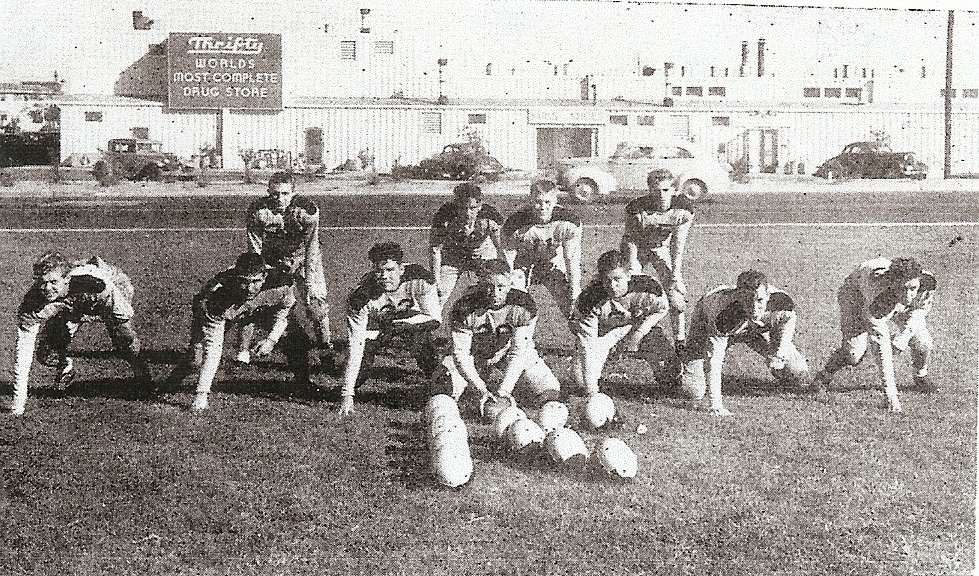
BOOM TOWN SAN DIEGO
The looming World War II changed everything.
Almost overnight San Diego was transformed, from a “sleepy border town to a teeming wartime metropolis”, according to The Journal of San Diego History.
Linda Vista would be known as the “Temporary Suburbs”, where eventually as many as 16,000 persons occupied almost 5,000 Federal housing units, most of which would be taken down in the years following the war.
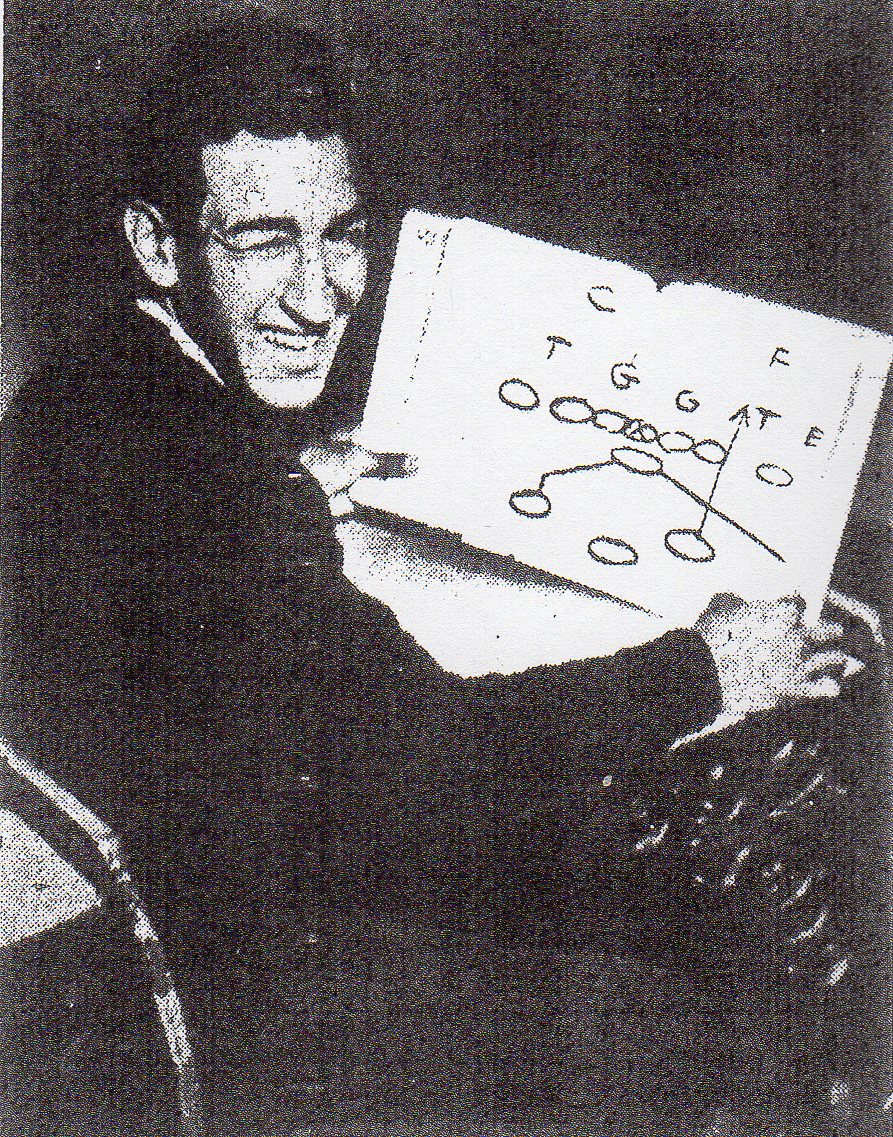
San Diego’s population increased almost 70 per cent from 1939-45, from barely 200,000 to more than 350,000. Aircraft workers and their families began pouring into the area at the rate of about 1,500 a week in late 1940.
Families reportedly slept in cars, garages, barracks or tents. Even in all-night movie theaters and abandoned streetcars in Mission Valley, according to The Journal of San Diego History.
The federal government, acting to find shelter for defense workers and military personnel, quickly began to throw up single-family homes and duplexes.
THREE-THOUSAND HOUSES IN 200 DAYS
Defense Housing Project #4092, AKA Linda Vista, was typical of federal projects designed to alleviate the housing problem. In just under 7 months 3,000 units went up.
City resources were stretched. And stretched.
The Linda Vista instant community lacked adequate access roads, retail shopping, fire and police protection, rubbish collection, and other essentials.
There was one Safeway. Checkout at any of the six lines sometimes took up to two hours.
KEARNY NOW GRADES 7-12
Kearny Junior High became a junior-senior high. The new school had progressively added a grade each year, with the first senior class beginning in September of this year.
The 1945 graduating seniors numbered 140, not counting another estimated 120 who left school for the military. Kearny numbered 536 students in six grades. Sixty turned out for the 1944 football team.
The Komets played a schedule against largely junior varsities. Behind quarterback Dick Rose, they posted a 2-5 record, the only varsity opponent being Brown Military, which shut them out, 27-0.
WHO WAS KEARNY?
Kearny High, Kearny Mesa, and various Kearny streets, towns, military installations, and land masses from the Midwest to the Pacific Coast, was named after Stephen Watts Kearny (pronounced Kar-nee and often misspelled “Kearney”), a decorated, 19th century army general known as the “father of the cavalry.”
Kearny fought in the War of 1812 and almost 35 years later was in a losing battle against the San Pasqual Indians, south of Escondido in 1846.
Kearny’s troops were outnumbered and their weapons would not fire because of wet gun powder in what became known as the “Battle of San Pasqual.”
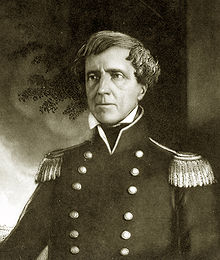
Slightly injured in the skirmish, Kearny and his group of 18 men retreated to an area known today as “Battle Mountain” on the northern edge of the Rancho Bernardo community.
As reported in some journals, Kearny and his troops would follow scout Kit Carson and make their way South to the area that now bears Kearny’s name.
The San Pasqual battle site still is visible. The fight took place on a rocky knoll east of Interstate 15, next to Lake Hodges.
HILLERS’ REIGN BEGINS
San Diego High was entering an unparalleled period of success. A 7-1 record would be followed by 16 consecutive winning seasons. From 1944-59 the Cavers were 127-24-4, an .832 winning percentage
And playoffs were back, sort of.
The California Interscholastic Federation Southern Section decreed championships in four districts.
No postseason play took place in 1943. Playoffs in 1942 and ’44 were given special sanction by the CIF executive committee but were not major playoffs.
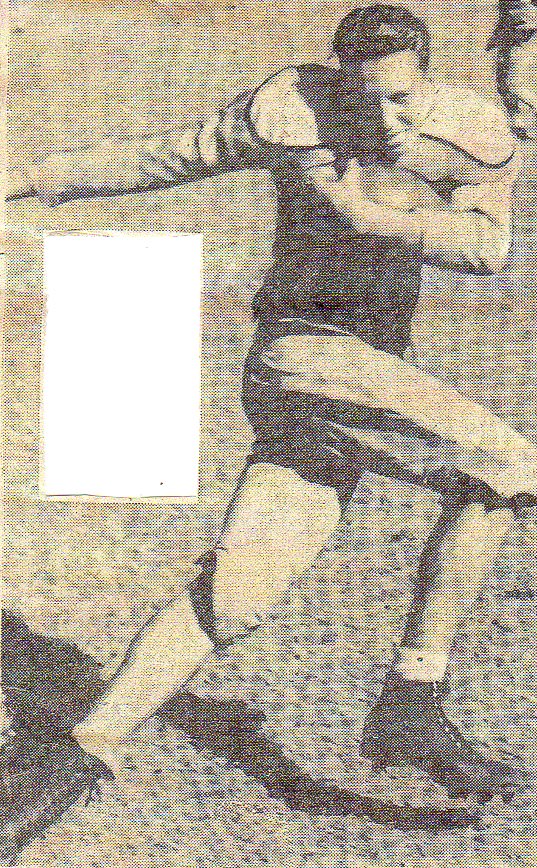
Billed as the County championship, the 6-1 Cavers met the 7-0 Escondido Cougars, led by quarterback Bob Embrey, who, better known as Chick Embrey, would forge a legendary coaching career at the school.
San Diego took a 13-0 halftime lead and cruised to a 20-0 victory before about 3,000 persons at Escondido High. The Cavers outgained the Cougars, 312-146, and had 23 first downs to 8.
The Hillers thus shared CIF Lower Division laurels with Alhambra Mark Keppel, which defeated Pasadena Junior College’s lower division (comprised of junior year and senior year high school students from John Muir High), 19-13; Bonita, which topped Calexico, 12-6, and Santa Ana, which defeated Norwalk Excelsior, 15-13.
Redondo Beach Redondo, which signed Hoover for a final regular-season game and warmed up for the playoffs by routing the Cardinals 54-0, knocked off Santa Monica, 31-7, in the upper division title game, then was declared co-champion with Mark Keppel.
Redondo finished the season with a 20-game winning streak dating to 1942 and Keppel’s season ended with an 8-0 record.
HONORS
Tackle Tom Dahms, the fourth of five brothers who played football at San Diego High over a span of two decades, was all-Southern California first team. Embrey made the second team.
St. Augustine center Jim Orsborn earned honors on the all-Southern California Catholic schools team.
Dahms played at San Diego State and in the NFL with the Los Angeles Rams and Chicago Cardinals, and then coached 20 years in the American Football League and NFL.
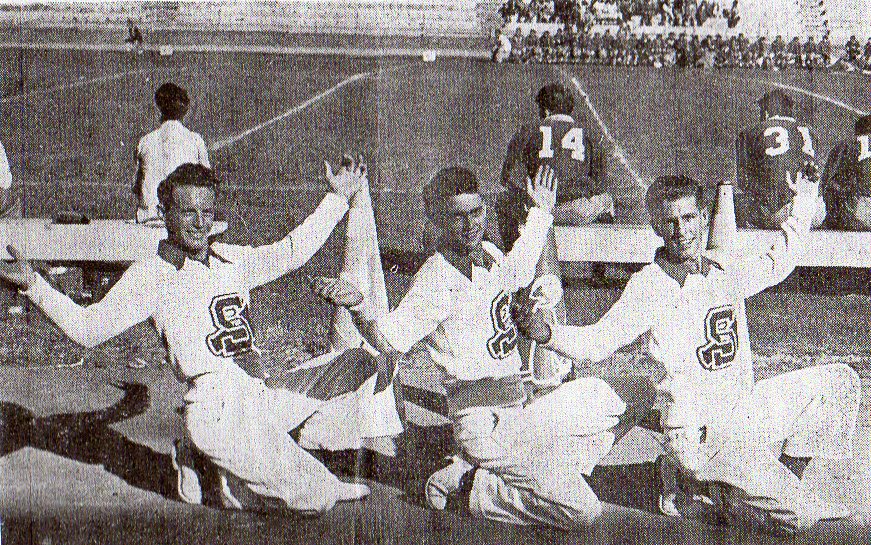
POINT-A-MINUTE HILLERS
San Diego’s 49-0 victory over Coronado represented its highest point total since a 69-0, season-opening win over Sweetwater in 1925, a span of 156 games.
The Hillers bettered that total five games later in an infamous, 72-0 rout of Hoover. Although at Balboa Stadium, that contest was Hoover’s home game.
Heavy rains during the week promised a “slow” track and game manager Lawrence Carr, the Hoover vice principal, considered a postponement and playing the game on Saturday afternoon at Hoover.
STADIUM SITE OF CARNAGE
As Bob Lantz wrote in The San Diego Union: “Reveling in its ability to score at will, the San Diego High powerhouse gave future Hillers and Cardinals teams a mark at which to shoot by burying Hoover under a 72-0 avalanche in the 12th annual meeting of the crosstown rivals before 18,000 fans last night in Balboa Stadium.”
The Cavers never punted and Hoover never crossed the 50-yard line. San Diego returned five intercepted passes for touchdowns. The Cardinals fumbled on their first play from scrimmage, setting up the Hillers’ first score.
The ultimate indignity came when Hoover backs more than once ran into each other on attempted single or double reverses.
Hillers coach Bill Bailey told Bill Cordtz of The San Diego Daily Journal that his team had 40 players dressed and every one got into the game.
San Diego’s Tom Powell set a “modern” school record with 25 points on four touchdowns and a conversion, which propelled Powell to the league scoring championship. San Dieguito’s Ralph Swain was the County leader with 100.
CAMP LOCKETT ROCKS
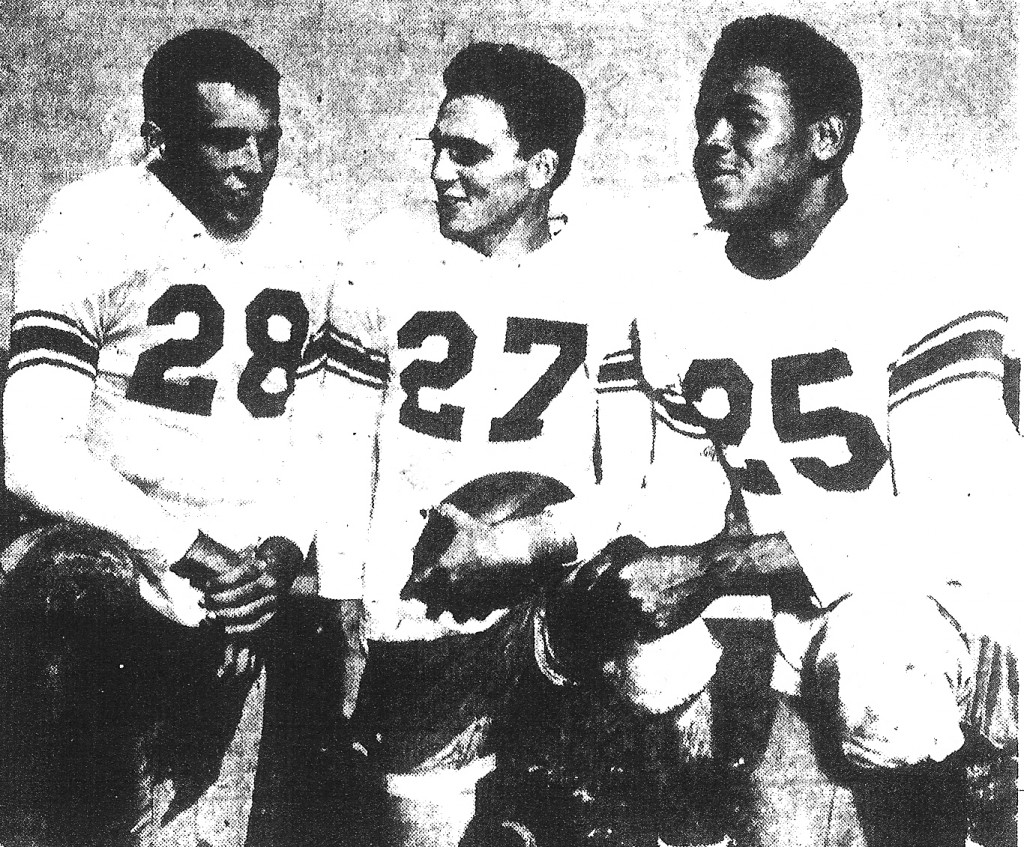
Brown Military traveled from Pacific Beach to Campo, more than 60 miles east, to play a team representing the Camp Lockett horse soldiers, who patrolled the Mexican border a mile away.
The Rocketts, whose roster included ex-college players, won 33-0, before a crowd of about 1,000 convalescing soldiers and Italian prisoners of war.
CAVERS’ HOMECOMINGS AGREE WITH POLY
Two of Southern California’s oldest antagonists, San Diego and Long Beach Poly, met for the 31st time and the first time since 1941 on the Cavers’ 12th annual Homecoming weekend.
Poly also was the visiting team when Homecoming was inaugurated in 1933 and the Jackrabbits furnished the opposition in 1939.
Poly extended its lead in the series to 21-9-1 with a 20-6 victory before 13,000 Friday night fans.
EAST IS EAST, WEST IS BEST
Point Loma, La Jolla, San Diego, and Coronado combined to give the East a 13-6 victory over the West, comprised of Hoover, Grossmont, and Sweetwater before about 18,000 persons in the sixth annual preseason carnival.
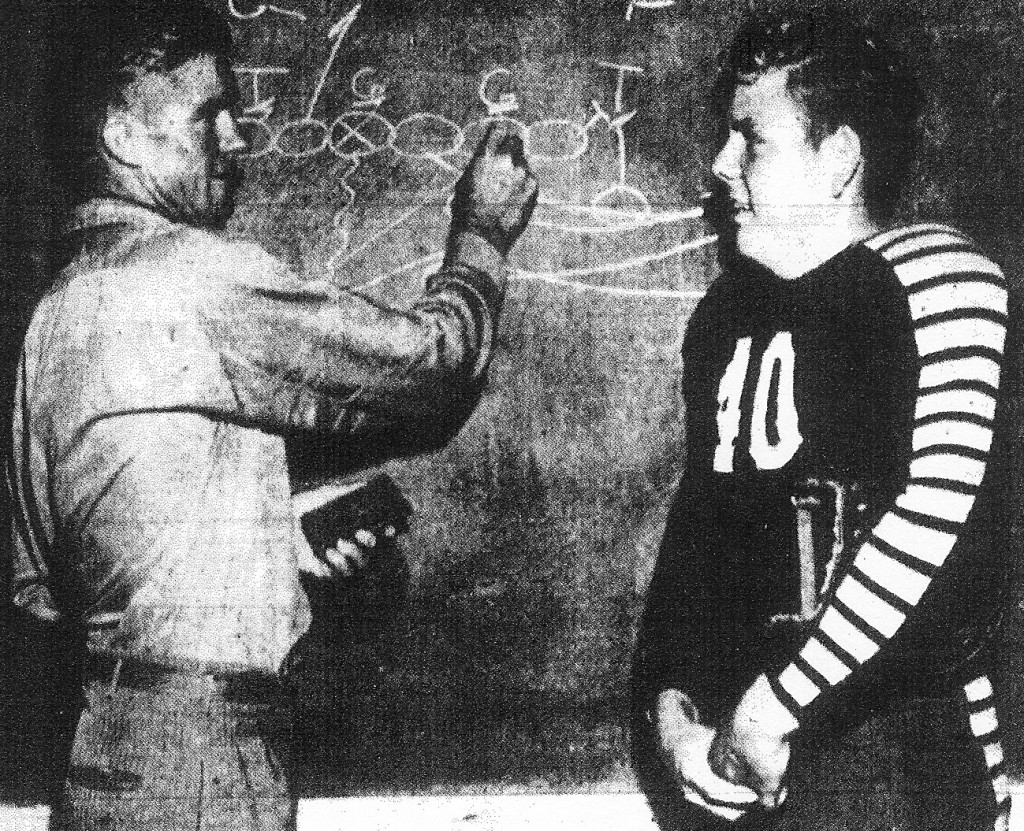
Hoover played the first and fourth quarters for the West. The Cardinals’ Freddy Espy ran 94 yards against Point Loma for the West’s only score.
Ed Teagle of La Jolla ran two yards and Tom Powell’s pass to Harry West for 30 yards against Hoover provided East touchdowns.
Instead of the usual 12-minute quarters, teams played for 15 minutes and were allowed a timeout.
FROM VIKINGS TO BOMBERS
La Jolla coach Larry Hanson lived a dual life.
He coached the Vikings and the San Diego Bombers.
Led by running backs Ed Teagle and George Pinnell, A.K.A. “The Vanishing Viking”, La Jolla posted a 4-2-1 record and overcame the loss of two returning lettermen starters who had 1-A draft status and left the team before the season.
Hanson was more successful in his weekend job as the moonlighting coach of the San Diego Bombers, which won the Pacific Coast Professional Football League championship with a 9-0 record.
The Bombers played a two-game, home-and-home, postseason series against the American Football League champion Hollywood Rangers and lost, 42-7 and 21-0.
Hanson’s workload apparently was not considered extraordinary, in comparison to that period in most Americans’ lives.
A story about the Vikings’ preseason opener against St. Augustine and casually featuring Hanson was on the front page of the Tribune-Sun sports section. Three columns to the right was a photograph of Hanson, also featured in an advance on the Bombers’ game with the March Field Fourth Air Force Flyers.
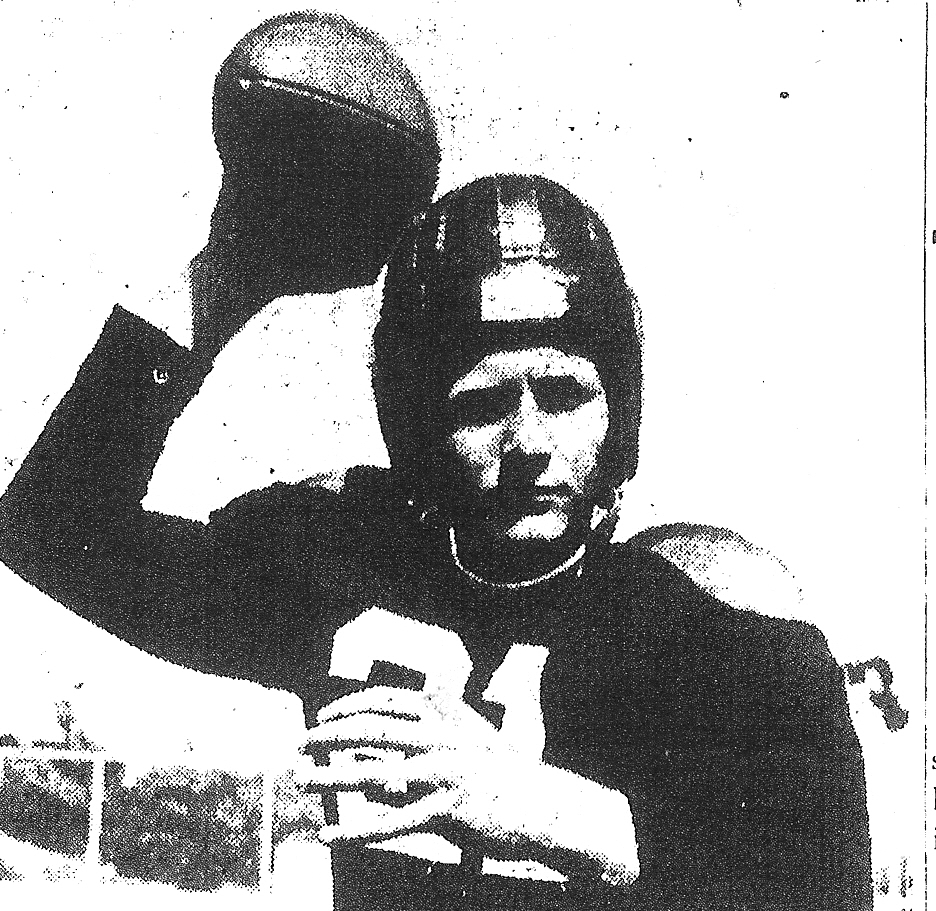
SIGNS OF THE TIME
A 25,000-year-old tooth was found in the backyard of a home at 1844 Palm Avenue in National City.
The homeowner discovered the 2 ¼-inch-wide chopper as he excavated a cesspool. Scientists said the tooth was from a tapir, a large mammal shaped similar to a pig and still extant in other parts of the world.
TRUE GRID
Including freelance members, such as Phoenix Union, Yuma, and Tucson in Arizona and a few junior highs, the Southern Section counted 139 schools…Escondido star Chick Embrey also was sports editor of the school newspaper…La Jolla halfback Ray Hoobler sustained a broken leg in a preseason scrimmage and was lost for the season…Hoobler was better known later in life as the San Diego Chief of Police from 1971-75…San Diego County teams began scheduling after-dark games as restrictions on night contests were being lifted…the lights went out for 18 minutes before the Lane Field kickoff between St. Augustine and San Bernardino St. Bernardine…the Saints won 21-0 after the lights came on…Fr. McDermott, the St. Augustine coach, attended a meeting in Los Angeles at which the Saints agreed to become members of the Southland Catholic League, which would begin play in 1945…an expansive loop, the Southland also promised to invite St. Mary’s High of Phoenix once wartime travel restrictions were lifted…the Arizona team did not join…former Southern League schools competed in the CIF-designated Group 12 League…there were 15 “group” leagues, created to put schools within short distances of each other…six Point Loma seniors played as sophomores for Cavers coach Bill Bailey’s last Point Loma team in 1942…local knowledge did not help the Pointers, San Diego winning, 45-0…Escondido businesses announced that they would be closed on Armistice Day, Nov. 11…the unbeaten, 6-0 Cougars were playing at 5-0-1 Oceanside for the Group 12 championship…San Diego’s Tom Powell, Joe Adamo, and Marcus Miranda visited Hoover’s Al Grandstrom in the hospital after Grandstrom sustained a severe knee injury in the rivalry game…St. Augustine dropped a 6-0 decision to the Coronado varsity in the final game of the season after losing to the Coronado JV, 7-6, in Week 2….